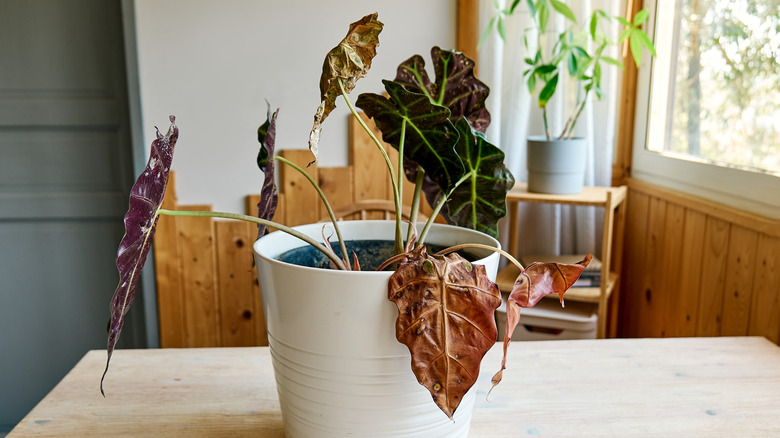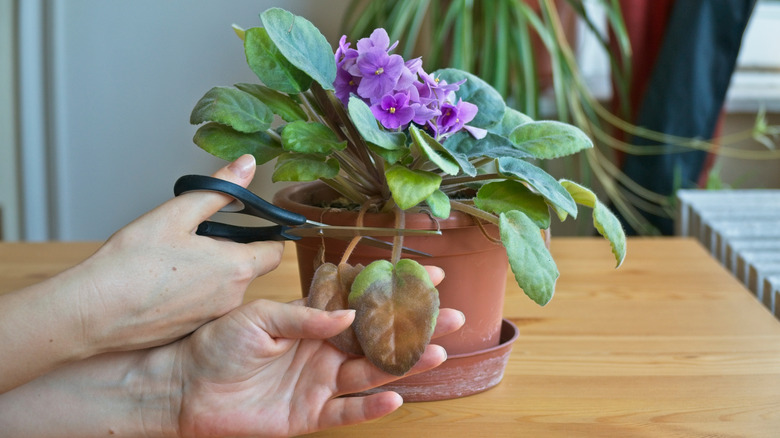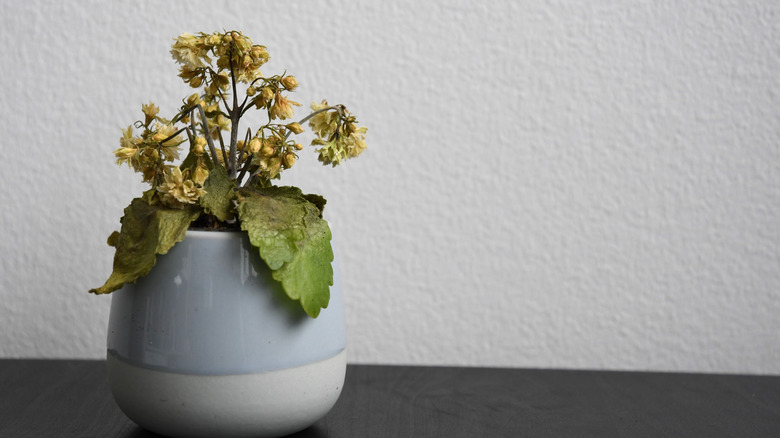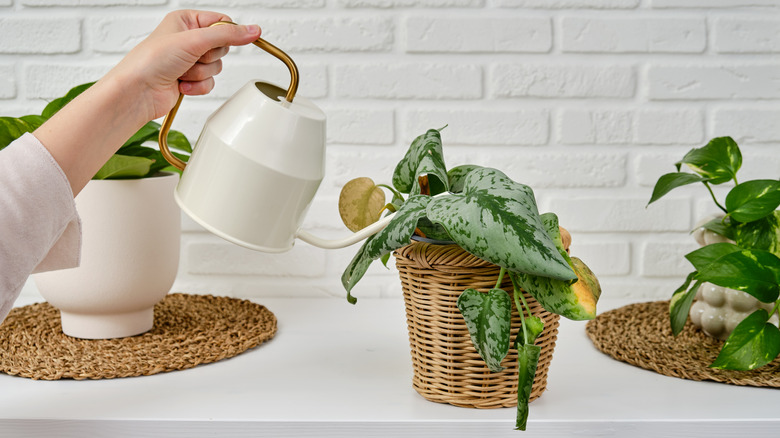7 Daily Tips To Reverse An Overwatered Plant
Your plants are your babies, so it's understandable that you want to give them enough food and water to thrive. However, too much water can be detrimental and lead to diseases such as root rot. It can also reduce the amount of oxygen in the soil, which can prevent the plant from taking up water and cause damage to its finer roots. If your plant looks unhappy, you may be giving it too much water.
Before you change your watering routine, you need to first confirm that overwatering is indeed the cause of your plants' issues. Signs that you are overwatering your indoor plants include wilting and yellowing of lower leaves, leaf drop, and leaf scorch. As these symptoms are similar to those of drought stress, check the soil and see if it feels dry or wet. If the soil is bone dry, your issue may be something other than overwatering. Thankfully, overwatering doesn't have to be a death sentence when it comes to plants. By doing little things every day to nurture it, your plant can recover and become healthy and flourishing once again.
Stop watering immediately
First things first, you need to stop watering straight away. Many plant lovers follow a schedule for their plant care, which helps them water and feed them accordingly. But you need to go off track if your plant is showing signs of overwatering. Even if your plant is one that loves a good drink, giving it any more water can cause it to die quickly. After stopping watering, keep an eye on your plant and check the soil every day. You can start watering it again once the soil has completely dried out.
Check drainage
Proper drainage is important for houseplants, so check drainage daily after you have stopped watering. If your plant is in a decorative pot, gently lift it out and see if it is sitting in water or not. If it is, pour out the water and do this every day. You should also ensure that the inner pot has enough drainage holes. If your plant is suffering from overwatering, but there is no water in the outer pot or saucer, there may be an issue with the inner pot or soil.
Prune off dying leaves
Your overwatered plant will probably have some damaged or dying leaves, and these should be removed in order to help it recover. Once a day, check over your plant and cut off browning or yellowing leaves with clean, sharp pruning shears or scissors. Doing so will allow the plant to focus on putting on new, healthy growth instead of trying to put energy into the leaves that are not worth saving.
Aerate the soil
Your plant may not need to be repotted if it is overwatered, but there are steps you can take to improve the soil's drainage. You can use chopsticks to aerate your houseplant soil by pushing them as far as you can in the pot. When you do this, push the chopsticks down slowly and carefully to ensure that you are not breaking any roots. If you don't have chopsticks, any long, thin object will do. Check the soil every day, and if it has become compacted again, you can repeat the process.
Avoid fertilizing
It can be tempting to give your houseplant a good feed when they are showing signs of stress, but this can actually cause more harm than good. When a plant is suffering from overwatering, its roots are delicate and can't absorb nutrients correctly. Furthermore, adding fertilizer to soil that has drainage issues can mean that the salts in the fertilizer damage the roots of your plant, causing it to suffer more. You should wait until your houseplant has fully recovered from its issues associated with overwatering before you fertilize it again.
Monitor symptoms
Your overwatered houseplant will look a bit unsightly for a while as it recovers. However, by monitoring the leaves and crown of your plant and checking them every day, you can see if the changes you have made are working and if there are any signs of disease. After a while, the yellowing and drooping of the overwatered plant will fade, and it will start to perk up. However, if your houseplant has crown or root rot, its symptoms will progressively get worse. Look out for browning of the crown and leaves.
Adjust your watering habits
Once your plant has recovered and it's time to start watering again, you need to ensure that the problem doesn't happen again by adjusting your routine. Every species of plant has its own unique watering needs, but so does every individual plant. The soil, container, age of growth, location, and humidity all affect when and how much a plant needs water. Before watering your houseplant, check the soil with your finger. Poke your finger an inch into the soil, and if it is dry, the plant needs some water.







